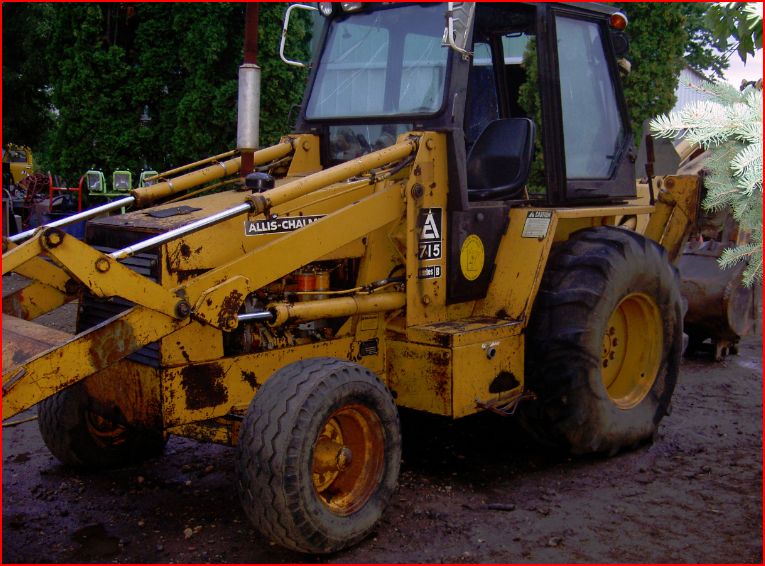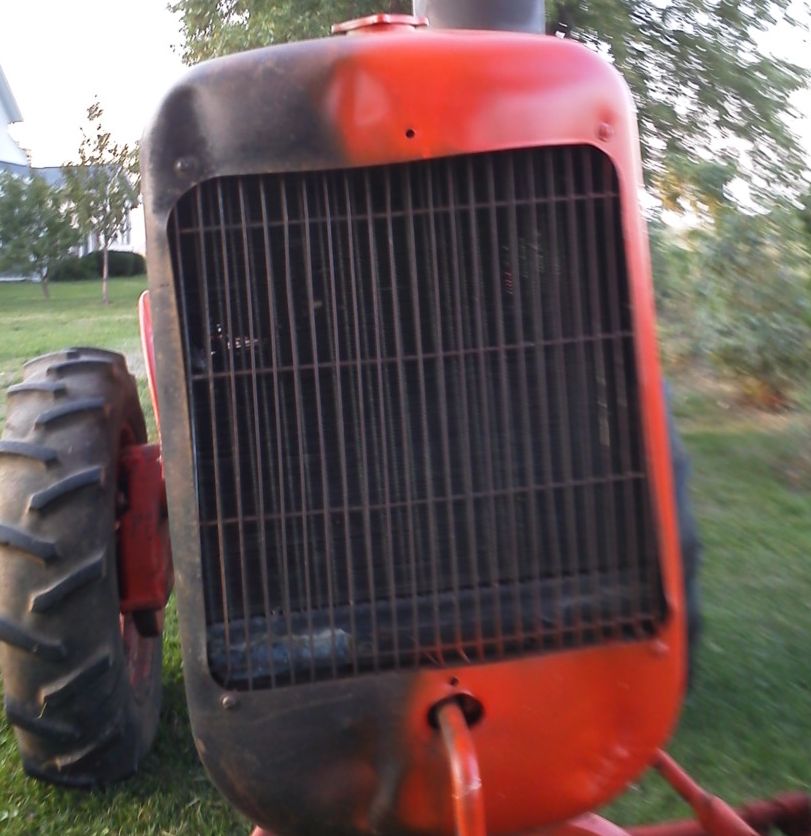| Author |
 Topic Search Topic Search  Topic Options Topic Options
|
Lars(wi) 
Orange Level Access


Joined: 14 Sep 2009
Location: Permian Basin
Points: 8267
|
 Post Options Post Options
 Thanks(0) Thanks(0)
 Quote Quote  Reply Reply
 Topic: 1920’s lathe & plaster Topic: 1920’s lathe & plaster
Posted: 21 Jun 2023 at 1:44pm |
|
House built in 1923, walls appear to be a lathe & plaster of sorts, but is harder than any I have ever ran across. Requires a masonry bit to install even the smallest anchor for a picture or putting up shelves.
I claim it’s cement, Wifey calls it lathe & plaster.
If lathe & plaster, is using masonry bits normal?
Pulled off paneling(on one bedroom wall)that was in front of USB board, that was glued to these ‘cement’ walls, mfg date of the paneling is 1983. Black adhesive was used, what is a good method to remove the adhesive off the walls?
Edited by Lars(wi) - 21 Jun 2023 at 1:46pm
|
|
I tried to follow the science, but it was not there. I then followed the money, and that’s where I found the science.
|
 |
|
Sponsored Links
|
|
 |
Dave in PA 
Orange Level

Joined: 13 Sep 2009
Location: Mars/Wexford PA
Points: 2629
|
 Post Options Post Options
 Thanks(0) Thanks(0)
 Quote Quote  Reply Reply
 Posted: 21 Jun 2023 at 2:08pm Posted: 21 Jun 2023 at 2:08pm |
|
Well, you are not going to want to hear what I have to say and recommend. Been doing this stuff for 40 plus years. As for the plaster, about an inch thick, might have wood or metal lathe behind. That old stuff, might be incorrect here, was more of a concrete, with horsehair in it for strength. It is tough! As for the black glue/mastic, taramite, or dynamite! Never found a good way to remove it. It will not come off, dig it out, and patch accordingly.
|
 |
steve(ill) 
Orange Level Access


Joined: 11 Sep 2009
Location: illinois
Points: 89138
|
 Post Options Post Options
 Thanks(0) Thanks(0)
 Quote Quote  Reply Reply
 Posted: 21 Jun 2023 at 6:33pm Posted: 21 Jun 2023 at 6:33pm |
|
tear it out and put up a couple sheets of drywall.... faster and cheaper in the long run.
|
|
Like them all, but love the "B"s.
|
 |
Thad in AR. 
Orange Level Access


Joined: 12 Sep 2009
Location: Arkansas
Points: 9671
|
 Post Options Post Options
 Thanks(0) Thanks(0)
 Quote Quote  Reply Reply
 Posted: 21 Jun 2023 at 7:04pm Posted: 21 Jun 2023 at 7:04pm |
|
Yes it’s a type of mortar.
Scrape off the glue best you can.
I’ve torched it off and I’ve used a cup brush on an angle grinder. Neither is fun whatsoever.
You can patch and smooth it just like drywall.
Anchors tend to crack the old crumbly stuff.
As Steve said, it’s best to remove it clean up the wall and drywall.
|
 |
Lars(wi) 
Orange Level Access


Joined: 14 Sep 2009
Location: Permian Basin
Points: 8267
|
 Post Options Post Options
 Thanks(0) Thanks(0)
 Quote Quote  Reply Reply
 Posted: 21 Jun 2023 at 7:23pm Posted: 21 Jun 2023 at 7:23pm |
 steve(ill) wrote: steve(ill) wrote:
tear it out and put up a couple sheets of drywall.... faster and cheaper in the long run. |
I think that option is out of the question. These walls were constructed using a sieve of sorts with the mud(mortar?) troweled into it over an inch thick. No wooden laths and chicken wire used here!
|
|
I tried to follow the science, but it was not there. I then followed the money, and that’s where I found the science.
|
 |
Pat the Plumber CIL 
Orange Level


Joined: 11 Sep 2009
Location: Springfield,Il
Points: 4974
|
 Post Options Post Options
 Thanks(0) Thanks(0)
 Quote Quote  Reply Reply
 Posted: 21 Jun 2023 at 8:30pm Posted: 21 Jun 2023 at 8:30pm |
|
I have a customer who gutted a 20s aged house. He took all the plaster and lath out . Now he is attaching 2x4 studs to the existing studs to straighten and plumb walls so that drywall will lay flat. Back in the day the wood was rough cut and not dimensional . The plasterer (actually I believe it was a Mason Back in the day) would then true up the wall with plaster. Might be 1/4" thick at the top and 1 and 1/2" thick at the floor. Drywall will not lay flat on old rough cut lumber for the most part. It makes remodeling these old ones a challenge .
Edited by Pat the Plumber CIL - 23 Jun 2023 at 8:28pm
|
|
You only need to know 3 things to be a plumber;Crap rolls down hill,Hot is on the left and Don't bite your fingernails
1964 D-17 SIV 3 Pt.WF,1964 D-15 Ser II 3pt.WF ,1960 D-17 SI NF,1956 WD 45 WF.
|
 |
tadams(OH) 
Orange Level Access


Joined: 17 Sep 2009
Location: Jeromesville, O
Points: 11145
|
 Post Options Post Options
 Thanks(0) Thanks(0)
 Quote Quote  Reply Reply
 Posted: 22 Jun 2023 at 7:26am Posted: 22 Jun 2023 at 7:26am |
Make sure you wear a mask working if you tear it out. The dust is hard on your lung.
|
 |
Coke-in-MN 
Orange Level Access


Joined: 12 Sep 2009
Location: Afton MN
Points: 42086
|
 Post Options Post Options
 Thanks(0) Thanks(0)
 Quote Quote  Reply Reply
 Posted: 22 Jun 2023 at 2:27pm Posted: 22 Jun 2023 at 2:27pm |
|
When I tore up carpeting at school where i worked - the mastic they used was called Green Death to glue carpet down , even a powered razer knife would not take it off the concrete . From janitor supply Co I bought from they came up with a orange based solvent , was $40 a gallon but worked like paint stripper in apply , wait a hour or so and mastic peeled up like paint bubbles with a stripper , slimy goo , but it came up .
might try a paint stripper gel to see if that works .
|
|
Life lesson: If you’re being chased by a lion, you’re on a horse, to the left of you is a giraffe and on the right is a unicorn, what do you do? You stop drinking and get off the carousel.
|
 |
steve(ill) 
Orange Level Access


Joined: 11 Sep 2009
Location: illinois
Points: 89138
|
 Post Options Post Options
 Thanks(0) Thanks(0)
 Quote Quote  Reply Reply
 Posted: 22 Jun 2023 at 4:15pm Posted: 22 Jun 2023 at 4:15pm |
|
most of the mastic, plaster and a lot of the mortar back in the 1900- 1960 contained a good portion of asbestos.... That is a fiber material that was used as a BINDER, for strength, heat resistance and wear resistance.... Watch what your doing with that.... Scraping or chipping up glue or wet material would be OK.... Lots of DUST / Powder will not be good for your health.
|
|
Like them all, but love the "B"s.
|
 |
DaveKamp 
Orange Level Access


Joined: 12 Apr 2010
Location: LeClaire, Ia
Points: 6108
|
 Post Options Post Options
 Thanks(0) Thanks(0)
 Quote Quote  Reply Reply
 Posted: 22 Jun 2023 at 5:05pm Posted: 22 Jun 2023 at 5:05pm |
So, it's LATH and plaster. Lathe is a tool used to make not-round parts into round parts.
If it's a 1920's era, high likelyhood that it's a 'kit' built house... like a four-square, or similar, from a Sears or Montgomery-Wards, as MOST of this period were built from mail-order kits.
The plaster mix used was somewhat variable, as the 'kits' were section-supply-job'd out to material providers all over the country, and there was frequent substitutes for 'or-equivalent' materials... this means that if a certain type of 'plaster' wasn't available, some other cementious product (like a high-strength portland cement) with sand might have gotten substituted... or the original builder used what was inexpensive and plentiful on the local market at that time.
My patio is an excellent example... I recently poured a slab patio, and priced out 5000psi mix, and they quoted me $192/yd. Then they quoted me a 5000psi C3 highway mix at $12 LESS per yard... so I took that. The C3 is slightly different, but in ways insignificant to my project, but it was lower-cost than the standard 5ksi simply because they were running large orders for the C3 mix, and all their machinery was set up and calibrated to run that mix... to stop that, reconfigure for the standard 5Ksi, would have taken lots of resources, so I ran with the C3, and it worked fine (it set up rather quick...)
All note regarding the walls not being 'flat'... are worthy of consideration, but take a string to the walls before jumping to conclusions. Due to the hand finishing process, it was not necessary for the walls to be perfect, but builders were invested in being accurate, and the wood available at that time was really good. I'm helping a buddy with a 1924 four-square right now, and we haven't found any deviations that will challenge drywall.
Horsehair... and silicosis... yes, plaster mixes for tha era had 'artisan's secrets', and horsehair for reinforcement was a common one. A little later in history, asbestos fibers were added. Sometimes, steel tailings from machine shops were used... and they're all kinda hard on the body. There's concern for, and I don't know how warranted it IS, but just an awareness... is that anthrax spora were very common to horsehair of that era... and if one is busting up plaster where that might be the case, those spores being released into the dusty air would wind up in your lungs, so keep the masks on and the ventilation fans going.
As for getting through it for anchors... if it's hard, and doesn't blow out when you drill, use whatever anchors grab.
As for adhesive... I'd find a way to get a sample of the gak, and segment it out on test trays and experiment with different solvents to see what affects it positively. Obviously, the harser petroleums will get into it, if it's a petroleum product... the citrus solvents will probably work it back, too.
|
|
Ten Amendments, Ten Commandments, and one Golden Rule solve most every problem. Citrus hand-cleaner with Pumice does the rest.
|
 |
jaybmiller 
Orange Level Access

Joined: 12 Sep 2009
Location: Greensville,Ont
Points: 24873
|
 Post Options Post Options
 Thanks(0) Thanks(0)
 Quote Quote  Reply Reply
 Posted: 22 Jun 2023 at 5:10pm Posted: 22 Jun 2023 at 5:10pm |
I'm with Steve, blow it ALL out and start 'fresh'....
though that'll be the ONE straight wall and 'someone' will wnat ALL the rest to be as nice.....hehehehehe
|
|
3 D-14s,A-C forklift, B-112
Kubota BX23S lil' TOOT( The Other Orange Tractor)
Never burn your bridges, unless you can walk on water
|
 |
Lars(wi) 
Orange Level Access


Joined: 14 Sep 2009
Location: Permian Basin
Points: 8267
|
 Post Options Post Options
 Thanks(0) Thanks(0)
 Quote Quote  Reply Reply
 Posted: 23 Jun 2023 at 9:02am Posted: 23 Jun 2023 at 9:02am |
|
Well, thanks for all your advice everyone. Wifey and I have decided at this time that ‘destruction’ will kept to an absolute minimum, so the current wall stays. We will explore options on removing the adhesives. Very little paint from the last coat(40+ years ago) has peeled, so minimal scraping is needed. We plan to re-texture the wall, but don’t like the ‘spray on’ technique that is popular. I grew up in a house that was built in 1962, the texture technique used then was to add a sand/grit to the primer coat of paint.
|
|
I tried to follow the science, but it was not there. I then followed the money, and that’s where I found the science.
|
 |
Lars(wi) 
Orange Level Access


Joined: 14 Sep 2009
Location: Permian Basin
Points: 8267
|
 Post Options Post Options
 Thanks(0) Thanks(0)
 Quote Quote  Reply Reply
 Posted: 23 Jun 2023 at 9:33am Posted: 23 Jun 2023 at 9:33am |
|
1 interesting thing we have discovered so far, when we took down the paneling & usb, to the left of the doorway leading to the hallway was a row of ‘keyed light switches’ buried behind the usb. We have always thought this structure was not originally built as a ‘residence’ but possibly a ‘meeting house’ or a ‘school bldg.’ Other clues to that is the floor plan. Two bathrooms in the hallway(boys & girls?) separated by a 3ft. ‘dead air’ space, the size and placement of windows, an old defunct ceiling ventilation system, 10ft ceilings.
|
|
I tried to follow the science, but it was not there. I then followed the money, and that’s where I found the science.
|
 |
Lars(wi) 
Orange Level Access


Joined: 14 Sep 2009
Location: Permian Basin
Points: 8267
|
 Post Options Post Options
 Thanks(0) Thanks(0)
 Quote Quote  Reply Reply
 Posted: 09 Jul 2023 at 11:22pm Posted: 09 Jul 2023 at 11:22pm |
|
Update: slowly working at it, got one wall completely free of the glue/mastic. Used a ‘floor adhesive remover’, citrus based, so no fumes. Does good job, slop it on the glue, come back couple hours later, and start chipping them off with heavy duty putty knife and a hammer at the other end. Some come off easily, others not so much, re-slop, and keep working at it.
|
|
I tried to follow the science, but it was not there. I then followed the money, and that’s where I found the science.
|
 |
Dirt Farmer 
Silver Level Access

Joined: 15 Sep 2020
Location: Illinois
Points: 452
|
 Post Options Post Options
 Thanks(0) Thanks(0)
 Quote Quote  Reply Reply
 Posted: 10 Jul 2023 at 3:00am Posted: 10 Jul 2023 at 3:00am |
|
After you slop the glue remover on the wall, while the area is damp cover it with a plastic trash bag pressing it against the wall to "seal" it, that will keep the remover chemical from evaporating as fast and it can work longer, that is what I do when removing wall paper.
|
 |
Lars(wi) 
Orange Level Access


Joined: 14 Sep 2009
Location: Permian Basin
Points: 8267
|
 Post Options Post Options
 Thanks(0) Thanks(0)
 Quote Quote  Reply Reply
 Posted: 15 Jul 2023 at 8:48pm Posted: 15 Jul 2023 at 8:48pm |
|
Moved to wall #2, pulled down the paneling and usb board, and surprise, surprise, there are windows buried behind the paneling. We figured there probably was something behind the paneling, if you looked just right and the lighting was just right, you could see the waviness of the wall. Here’s the kicker, they didn’t even remove the trim boards from around the windows, just laid the paneling over them. Another confirmation this structure was a school/meeting house; the glass panels are reinforced with ‘chicken wire’ in the glass.
|
|
I tried to follow the science, but it was not there. I then followed the money, and that’s where I found the science.
|
 |
steve(ill) 
Orange Level Access


Joined: 11 Sep 2009
Location: illinois
Points: 89138
|
 Post Options Post Options
 Thanks(0) Thanks(0)
 Quote Quote  Reply Reply
 Posted: 15 Jul 2023 at 9:52pm Posted: 15 Jul 2023 at 9:52pm |
|
are the windows visible from the OUTSIDE of the house, or has that been SIDING over as well ?
|
|
Like them all, but love the "B"s.
|
 |
Lars(wi) 
Orange Level Access


Joined: 14 Sep 2009
Location: Permian Basin
Points: 8267
|
 Post Options Post Options
 Thanks(0) Thanks(0)
 Quote Quote  Reply Reply
 Posted: 16 Jul 2023 at 6:58am Posted: 16 Jul 2023 at 6:58am |
 steve(ill) wrote: steve(ill) wrote:
are the windows visible from the OUTSIDE of the house, or has that been SIDING over as well ? |
Not visible, where the enclosed porch is, the siding has been removed, and paneling installed.
|
|
I tried to follow the science, but it was not there. I then followed the money, and that’s where I found the science.
|
 |
GSTROM99 
Silver Level


Joined: 12 Dec 2020
Location: Greene, IA
Points: 246
|
 Post Options Post Options
 Thanks(0) Thanks(0)
 Quote Quote  Reply Reply
 Posted: 16 Jul 2023 at 10:52am Posted: 16 Jul 2023 at 10:52am |
|
Old houses always have a story. My 1920's farm house had lath/plaster, in the living room and kitchen - covered with ugly '70s panelling. Knocked it all out, fixed the "blown in" insulation (they missed several sections) and put up drywall for the walls. A couple areas had wallpaper some just pulled down, others had to be sanded, skim coated with joint compound. Ceiling that had several missing and loose areas got "fixed". There is an addition (after what appears to have been afire) that has a main level bath and bedroom - drywall in that section.
Edited by GSTROM99 - 16 Jul 2023 at 10:53am
|
 |
Ted J 
Orange Level


Joined: 05 Jul 2010
Location: La Crosse, WI
Points: 18943
|
 Post Options Post Options
 Thanks(0) Thanks(0)
 Quote Quote  Reply Reply
 Posted: 18 Jul 2023 at 12:09am Posted: 18 Jul 2023 at 12:09am |
After all my reading and getting caught up, I'll chime in on this one..... It's LATH and plaster. A lathe is a machine that you use to make metal or wood parts on. LOL!!
There is NOTHING fun about tearing into the walls of a 100 year old house. I also have one. You would NOT believe that my bathroom floor had .... wait, lets go back. The floor joists in my house are rough sawn 2" x 12" joists!!! First time I've EVER seen that. Anyway, putting in a new bathroom right after we bought the place,,,, tear out all the old lath and plaster, the sub floor and lo and behold,,,,,,,,there is ONE FOOT of a real dense concrete inbetween the floor joists. I'm not chitting you!!! Took my son and his buddy 2 days to chisel it all out. I should have had an accident then and the place burned down.... Now onto the kitchen... The walls have the same thing you are dealing with. NONE of them are plumb,,,,they must have used the plumb-bob my Dad used...you hold up your thumb sky ward and when you think it's straight, you yell "NAIL IT". LOTS of fun, but the history of the house kind of makes up for it... Have fun and 'git er done'.
|
|
"Allis-Express"
19?? WC / 1941 C / 1952 CA / 1956 WD45 / 1957 WD45 / 1958 D-17
|
 |









 Topic Options
Topic Options

 Post Options
Post Options Thanks(0)
Thanks(0)




 steve(ill) wrote:
steve(ill) wrote:



